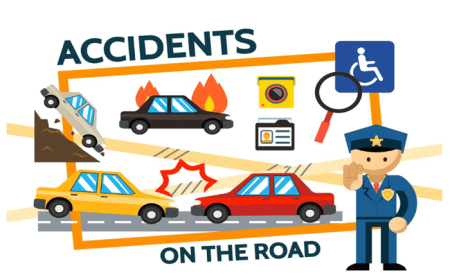Festivals and major events bring energy and excitement to cities, drawing in large crowds and boosting local economies. However, they also create unique challenges for transportation, particularly for rideshare and taxi services. Increased demand for rides, congested roads, and unfamiliar drivers navigating chaotic traffic conditions can significantly raise the risk of accidents. Understanding the impact of these events on rideshare and taxi accident rates is essential for promoting safety for drivers and passengers alike.
Accidents during festivals can lead to serious injuries and significant financial consequences for those involved. For passengers, navigating insurance claims after an accident involving a rideshare or taxi can be confusing and stressful. For drivers, the high-pressure environment of these events often increases the likelihood of errors. Dealing with these risks involves a combination of preventative measures, better planning, and clear communication among all stakeholders.
Increased Demand During Festivals
Festivals and events create a surge in demand for rideshare and taxi services, overwhelming drivers and transportation platforms. Drivers may take on more trips than usual, often working long hours to maximize earnings. This fatigue can lead to slower reaction times and increased chances of accidents, especially during peak traffic hours.
Passengers may also contribute to the chaos. Impatient riders hailing rides in unsafe locations or distracting drivers during trips can add to the risk. Organizers and transportation providers can help mitigate these issues through designated pickup zones and better coordination, making the experience safer for everyone.
Congested Roads Amplify Risks
During festivals, roads become crowded with vehicles, pedestrians, and bicyclists, creating a higher likelihood of collisions. Navigating through dense traffic can be challenging, even for experienced drivers. Rideshare and taxi drivers who are unfamiliar with the area may struggle to adapt, further increasing the risk of accidents.
Strategic traffic management, including temporary road closures and detour plans, can alleviate congestion. Cities hosting festivals can also benefit from promoting alternative transportation methods like shuttles or park-and-ride services. These measures can reduce traffic volume and help keep streets safer during major events.
Influence of Alcohol and Late-Night Rides
Late-night rides after festivals often involve passengers who have consumed alcohol, leading to a heightened risk of accidents. Intoxicated passengers may distract drivers or behave unpredictably, making the driving environment more hazardous. In such situations, drivers face additional challenges in maintaining focus and control.
Transportation platforms can play a role in addressing this issue. Encouraging passengers to travel with sober companions or implementing features that allow drivers to report unsafe behavior can improve safety. Raising awareness about these risks helps both passengers and drivers navigate late-night trips more responsibly.
Challenges for Out-of-Town Drivers
Festivals often attract drivers from surrounding areas who travel to meet the surge in demand. While this helps with capacity, these drivers are often less familiar with local traffic patterns, road layouts, and event-specific restrictions. This lack of familiarity can lead to navigation errors, sudden stops, or missed turns, increasing accident risks.
Better communication through rideshare apps, including real-time updates and detailed maps, can help drivers navigate safely. For passengers, choosing experienced local drivers whenever possible can also enhance safety. Communities hosting festivals should prioritize providing clear signage and easily accessible information for all road users.
Legal and Financial Consequences of Accidents
Accidents during festivals often leave victims dealing with complex legal and financial challenges. Determining liability can be particularly tricky when rideshare or taxi services are involved. For those injured in such accidents, seeking professional legal assistance is crucial to ensure fair compensation for medical expenses, lost income, and other damages.
Consulting a Parker car accident lawyer can help victims navigate the complexities of accident claims. These legal professionals specialize in holding negligent parties accountable while protecting the rights of those affected. Their expertise ensures that victims receive the support they need during a difficult time. Having a lawyer can significantly increase the chances of securing a fair settlement for the damages incurred.
Preventative Measures to Lower Accident Rates
Proactively addressing the causes of rideshare and taxi accidents during festivals can significantly enhance safety. Below are some effective preventative measures:
- Designated Lanes: Cities and event organizers can implement dedicated lanes for rideshare vehicles to reduce congestion and streamline traffic near festival zones.
- Increased Police Presence: A visible police presence can deter reckless driving and ensure compliance with traffic regulations.
- Crowd Management: Better organization and management of pickup zones can prevent chaos and reduce the risk of accidents.
- Driver Safety Training: Rideshare platforms can provide drivers with training focused on navigating high-traffic events safely.
- Rest Breaks: Encouraging drivers to take breaks helps prevent fatigue and maintain alertness during long shifts.
- In-App Navigation Updates: Real-time navigation and traffic updates can help drivers avoid hazards and stay on safer routes.
Role of Technology in Improving Safety
Technology plays a critical role in managing rideshare and taxi services during festivals. Real-time GPS updates and route optimization tools can help drivers navigate congested areas more effectively. Safety features like emergency assistance buttons and in-app reporting options allow passengers to flag concerns quickly, improving accountability.
For event organizers, using digital platforms to manage transportation logistics can streamline operations and reduce risks. Apps that provide live updates on traffic, road closures, and designated pickup zones improve coordination among drivers, passengers, and city officials. Moreover, employing data analytics can help anticipate peak travel times and adjust transportation resources accordingly. As technology advances, its integration into festival transportation planning will continue to enhance safety.
Long-Term Strategies for Safer Events
Creating a safer transportation environment during festivals requires long-term planning and collaboration. Cities should invest in infrastructure improvements, such as expanded sidewalks, better lighting, and additional pedestrian crossings, to accommodate increased crowds. Event organizers should include transportation safety as a core component of their planning processes.
Public education campaigns can also make a difference. Raising awareness about the risks associated with rideshare and taxi use during festivals encourages responsible behavior among passengers and drivers. Fostering a culture of safety allows communities to enjoy the excitement of festivals while maintaining secure transportation.







